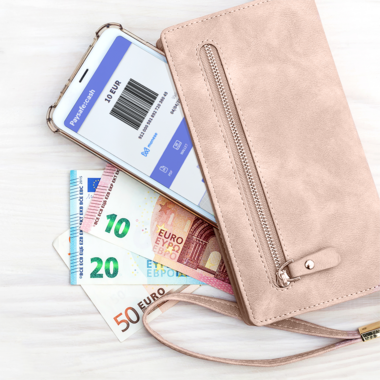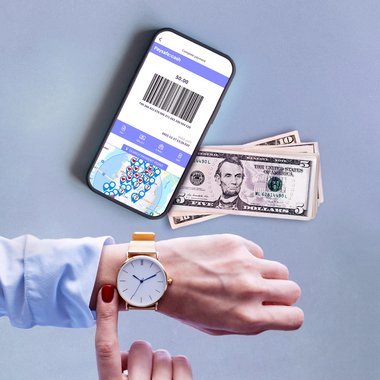eCash and mCommerce: A perfect match for Gen Z consumers?
Jul 23, 2020Almost 50% of Generation Z (Gen Z) consumers, aged 16-24, now shop more on mobile than on any other device, making them the leading adopters of mCommerce. With that trend expected to grow, how can businesses better respond to their shopping needs?

According to data from our 2019 research report Lost in Transaction: Gen Z expectations at the checkout, younger earners are mobile natives that are embracing frictionless payments more than other demographics, making them more likely to want to make purchases online using their smartphones. As more young consumers enter the workforce, merchants looking to improve conversion rates at the checkout can focus on user-friendliness and offer eCash payment options to attract new customers, including Gen Z shoppers who are either underbanked or value the benefits of cash as an online payment method.
Gen Z consumers are generally more open to new payment technology
Our research shows younger consumers are embracing alternative payment methods. In fact, key data indicated that Gen Z consumers felt more comfortable, positive, and open to trying new technologies, aligning with mCommerce’s and eCash’s current momentum. In addition, 72% of Gen Z and 79% of Millennials, aged 25-39, regularly shop online using a smartphone.
Moreover, 40% revealed they habitually use in-app payments, like Uber, compared to 27% of all other consumers. Twenty-nine per cent regularly complete payments using online cash solutions, like Paysafecash, versus 24% of all other consumers. Interestingly, 25% of young shoppers also regularly use pre-paid vouchers or pins, such as paysafecard, compared to 17% of all other customers.
In older consumer groups, our data shows card payments to be the preferred payment method, which is in line with their ingrained historical experience of eCommerce. On the other hand, Gen Z consumers are more open-minded when it comes to online shopping and even banking. Incidentally, digital banks like N26 and Monese have shifted the digital finance landscape further for example by offering their services via mobile apps. With both entities providing appealing features like real-time transactions and bill-splitting, younger consumers aren’t limiting themselves when it comes to financial services.
COVID-19 accelerated the interest in eCash payment solutions
The idea of using online cash for eCommerce is popular, particularly with many consumers currently shopping online due to the pandemic, and some even doing so for the very first time. Overall, 55% of individuals, aged 16-24, said they’d shop online more if they could use cash compared to 36% consumers aged over 25 who said the same thing. With convenience being a clear focus for younger online consumers, businesses should invest in offering the most seamless and diverse user experience at the checkout.
Unbanked and underbanked individuals are other demographics that benefit from eCash solutions and younger consumers are overrepresented in this group. For young individuals receiving cash allowances from their parents or working cash jobs to support themselves, the online cash payment option allows for more freedom and control of their funds.
As more consumers find themselves shopping online, brands operating in popular verticals could gain a competitive edge. This includes industries like gaming, where 21% of Gen Z consumers and 40% of Millennial consumers across the globe are major consumers and a European study shows that they spend most of their online money on computer games. Beside the rise in online gaming, apps and consoles have experienced a surge in activity across various markets. According to MiQ data, play time has spiked the most in the US and in the UK by almost 40% compared to the pre-lockdown environment. Over in Canada and Germany, there’s been an increase of 15% to 18% since the start of the pandemic.
Businesses looking to cater to younger consumers can leverage these trends for the success of their eCommerce platforms.
Gen Z’s purchasing power
We know that 47% of Gen Z consumers already shop more on a mobile device than any other technology. Combined with the potential power of 5G networks, this preference will strengthen and more consumers will be purchasing items while on the move, meaning user experience will have to be prioritised.
According to a 2017 IBM study, Gen Z consumers hold $44 billion in purchasing power every year and are on track to become the demographic with the largest buying power by 2020. That same study unveiled Gen Z’s desire for personalised interactions and brand-consumer engagement across all channels. On the same theme of user experience, 60% of Gen Z consumers said they wouldn’t use an app or website if it were too slow to load. These shopping preferences are important when considering both an enhanced eCommerce shopping experience, as well as the influence these consumers have on household purchases.
Since the Gen Z consumer could still be living at home with a parent or guardian, it’s safe to assume they could influence home spending. From food and electronics to home goods, the younger generation is involving itself more in household purchasing decisions. Gen Z consumers are most likely to make recommendations based on the influencers they follow on social media, personal interests, and ethics, so brands should pivot on not only gaining this customer, but also retaining them for long-term loyalty.
Businesses and operators who see young consumers as a potential target market can reach that demographic by adopting a mobile-first approach and offering online cash payment options at their checkout.


